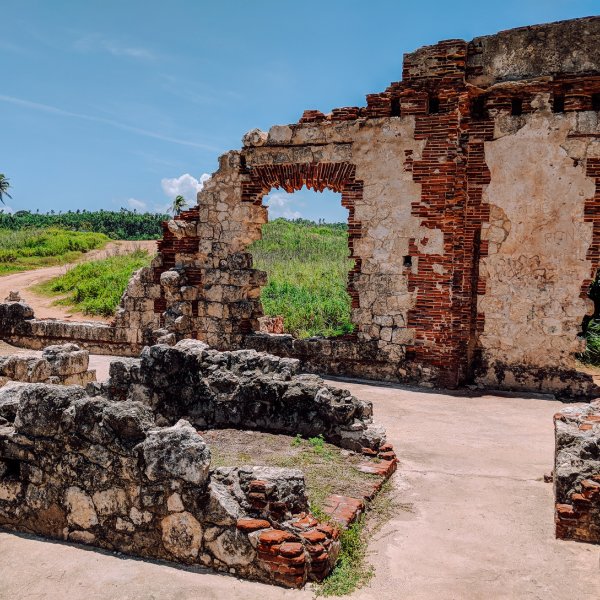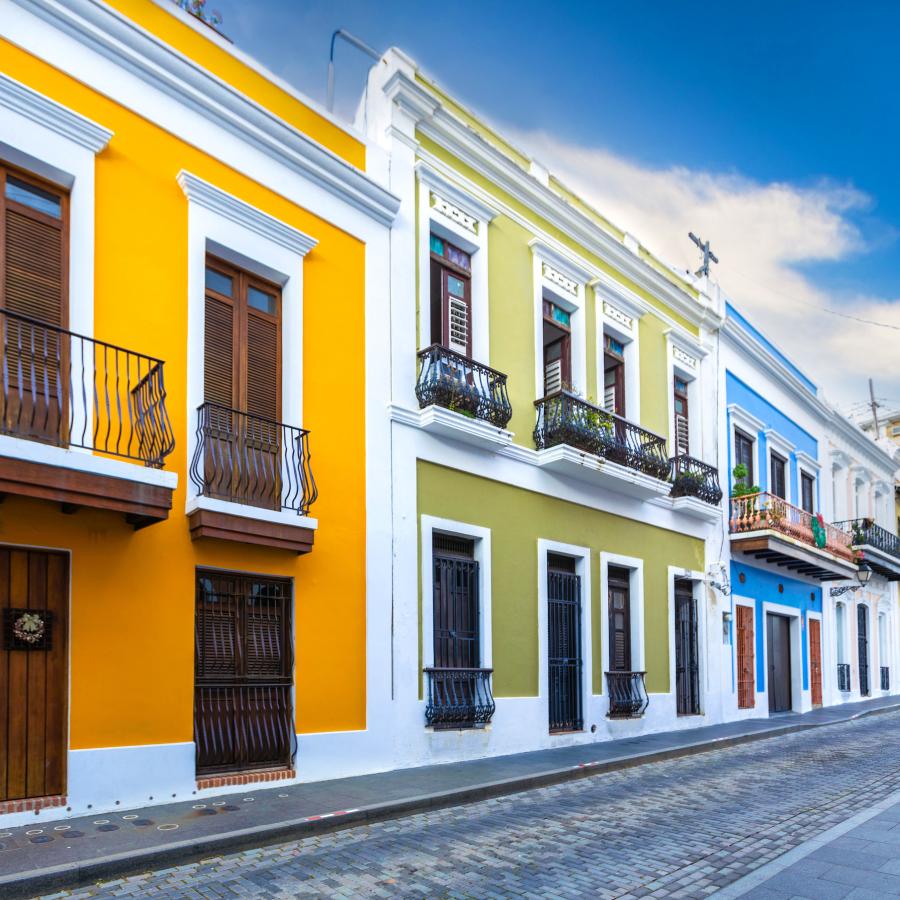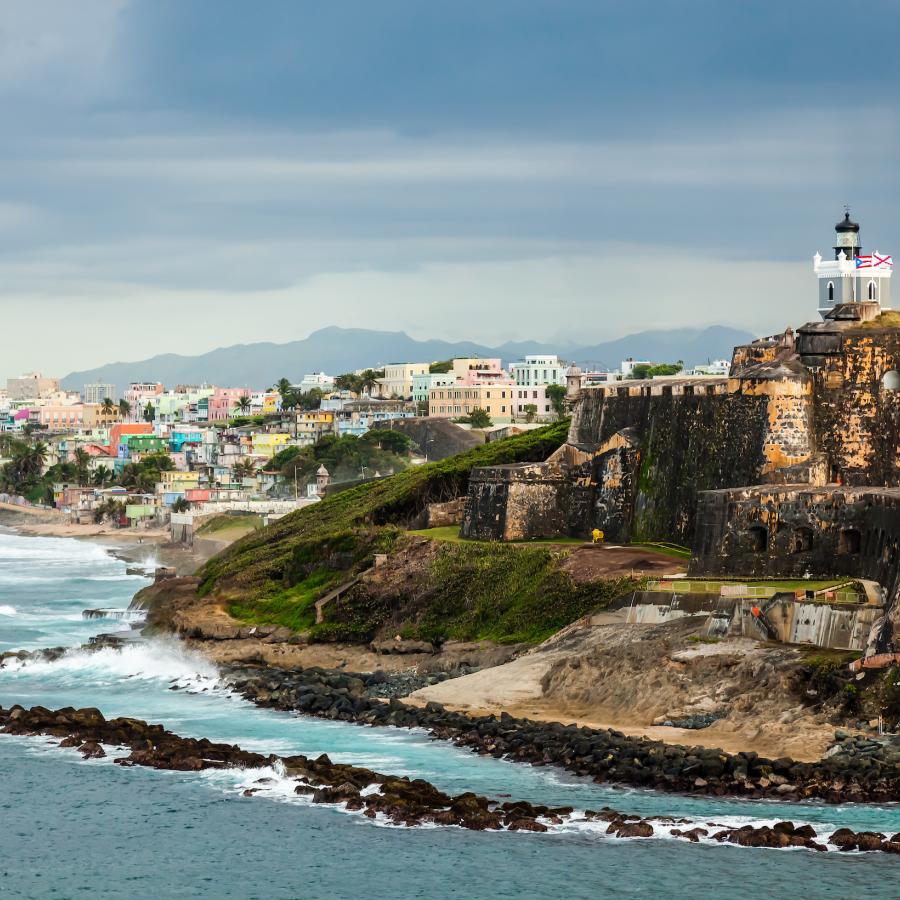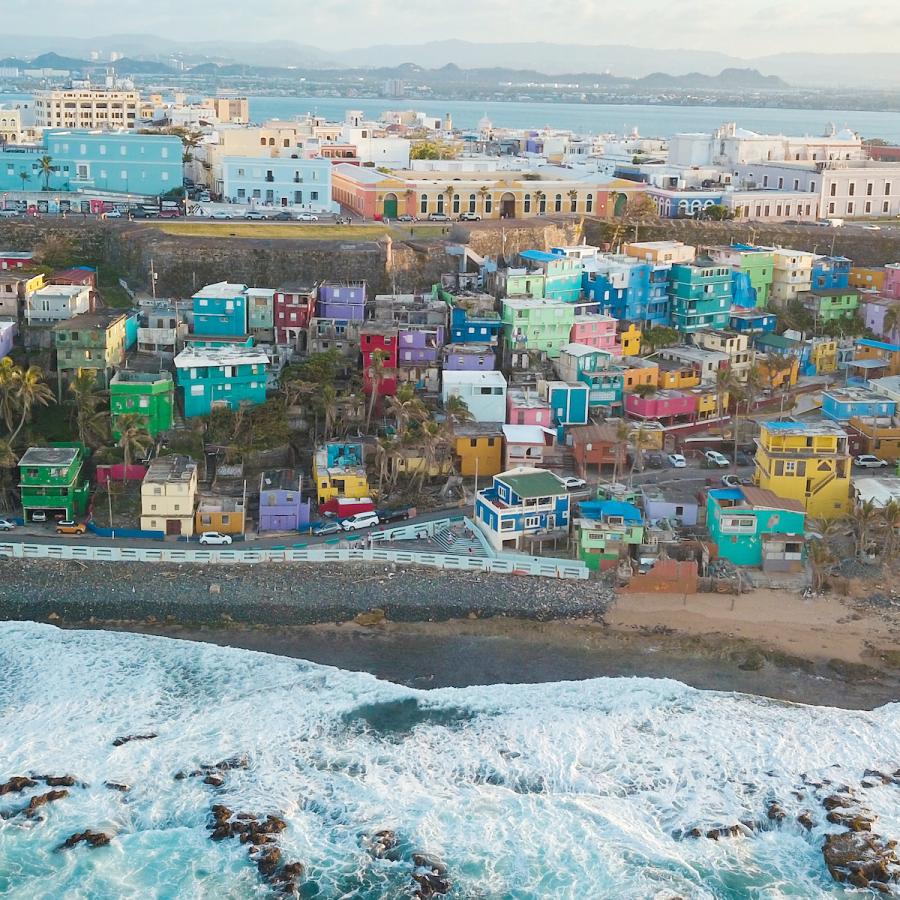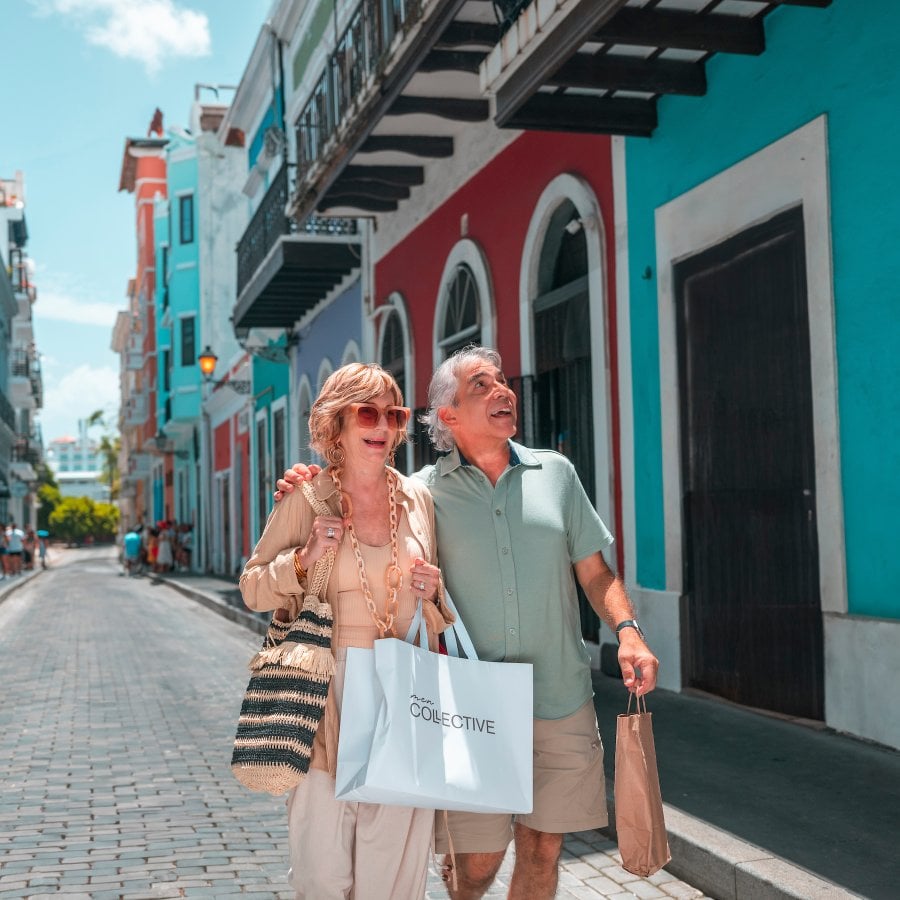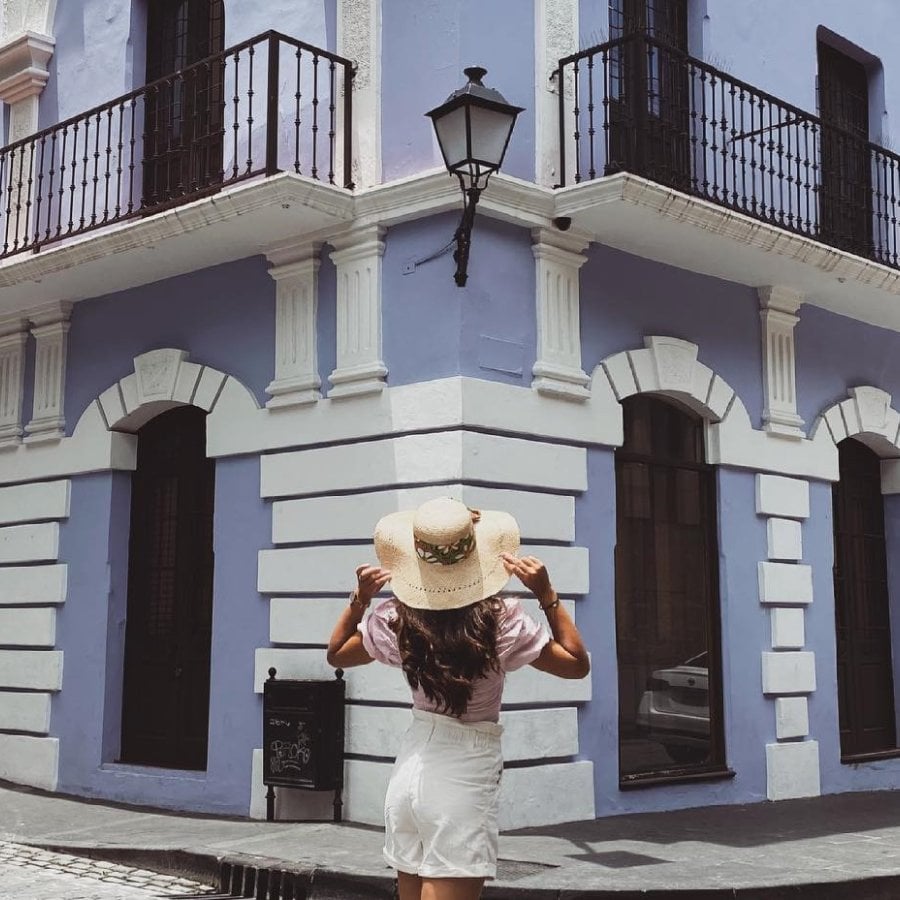Visit this top attraction to learn the history behind one of Spain's major military engineering marvels, from colonization to the Second World War.
Few landmarks are more representative of Puerto Rico's legacy within the Caribbean and the Americas than Castillo San Felipe del Morro, better known as El Morro. This fortification on the corner of the islet of Old San Juan now greets cruise ships as they leisurely sail in and out of the bay. During most of its nearly 500-year history, it was an important military outpost for Spain and later the United States.
When you walk through the narrow entrance and see the flags waving in the Atlantic breeze, it's easy to be transported to another time in history and imagine soldiers in antiquated uniforms marching along the edge of the wall where cannons fit snuggly into the embrasures.

Ocean views at Castillo San Felipe del Morro in San Juan.
When you visit, you will learn about El Morro and the Island's history itself – why Puerto Rico's strategic location in the Caribbean made it an important port for those trying to expand their reach in the New World, and how the United States used the fort during both World Wars.
Here's what you need to know when you come to visit!
A Brief History of El Morro
Old San Juan was founded in 1521 by Spanish settlers. The first fortification, La Fortaleza (The Fortress), began construction in 1533 and currently serves as the governor's mansion. The Castillo San Felipe del Morro, or El Morro, was the second fort built on the islet of what is now Old San Juan and Puerta de Tierra. El Morro's construction commenced in 1539 and finished in 1790; during those 250 years, El Morro went from a promontory mounted with a cannon to a six-level fortress designed to unnerve attackers approaching from the sea.
A half-mile across the mouth of the Bay of San Juan is another, smaller fort called Fortín San Juan de la Cruz, known as El Cañuelo. When enemy ships would try to enter the bay, the two forts created a crossfire that effectively closed the bay entrance and the rest of San Juan. Thanks to El Morro (and El Cañuelo), the Spaniards were able to defend Puerto Rico from invasions by the British, Dutch, and pirates.
Visiting on a Cruise? Discover what to do.
In 1898, due to the Spanish-American War, the Island changed hands from Spain to the United States. El Morro was designated as part of Fort Brooke and actively used as a military installation during the First and Second World Wars.
In 1961, the US Army retired El Morro, passing it on to the National Park Service to establish a museum. In 1983, El Morro and the walled city of Old San Juan were declared UNESCO World Heritage Sites.

Crowds enjoying a sunny day on a field outside Castillo San Felipe del Morro in San Juan.
Planning Your Visit
El Morro is open seven days a week from 9:30 a.m. to 4:30 p.m. The entrance fee is $10 for adults, and children under 15 years of age have free admission. On certain days of the year, the National Park Service offers free entry to all visitors, including Martin Luther King, Jr. Day in January, National Park Week in April, and Veterans Day in November. The receipt will also allow you to visit the other fort, Castillo San Cristóbal, without having to pay a separate entrance fee (and vice versa).
Clothing Tips
Wear weather-appropriate clothing and shoes. Much of the fort's inner courtyard is exposed and can get quite hot during sunny days; loose, light-colored clothing, shorts, and sunscreen are highly recommended. And drink plenty of water! On rainy days, the ramps leading to the different levels can be quite slippery. Best to wear sturdy footwear with good traction. The fort is also very windy, so skirts and dresses are not recommended, and you'll want to hang on to your hats.

National Historic Site, Castillo San Felipe del Morro.
Inside El Morro
To reach El Morro, you'll walk up a path that crosses the giant lawn in front of the fort. You're greeted at the entrance by the National Park employees that charge the entrance fee. Park rangers lead tours through the fort in both English and Spanish, but you're free to explore the different levels and rooms on your own if you prefer. Each section has re-creations of barracks, kitchens, and other facilities used by the soldiers. Informative presentations paint a vivid picture of the importance of Puerto Rico as a strategic entry point to the Americas and the evolution of El Morro and its artillery over the last five centuries.
If you're looking to take some impressive vacation photos, visit the lowest level of the fort that nearly reaches the water. You'll get an idea of the magnitude and size of this military installation. You'll also be able to see El Cañuelo, located on a small island, across the water. You'll enjoy a view of the Atlantic Ocean, Old San Juan, Santa María Magdalena de Pazzis Cemetery, and La Perla, a neighborhood built outside the wall from the higher levels. From El Morro's dry moat, you can access an entrance to the Paseo del Morro, a pathway that follows the city's outer wall to the Gate of San Juan (approximately 1.5 miles). You can also linger for a while on the giant lawn in front of El Morro and fly a kite, a local tradition that has lasted through generations.
Few landmarks are more representative of Puerto Rico's legacy within the Caribbean and the Americas than Castillo San Felipe del Morro. Learn the history behind one of Spain's major military engineering marvels, from colonization to the Second World War.
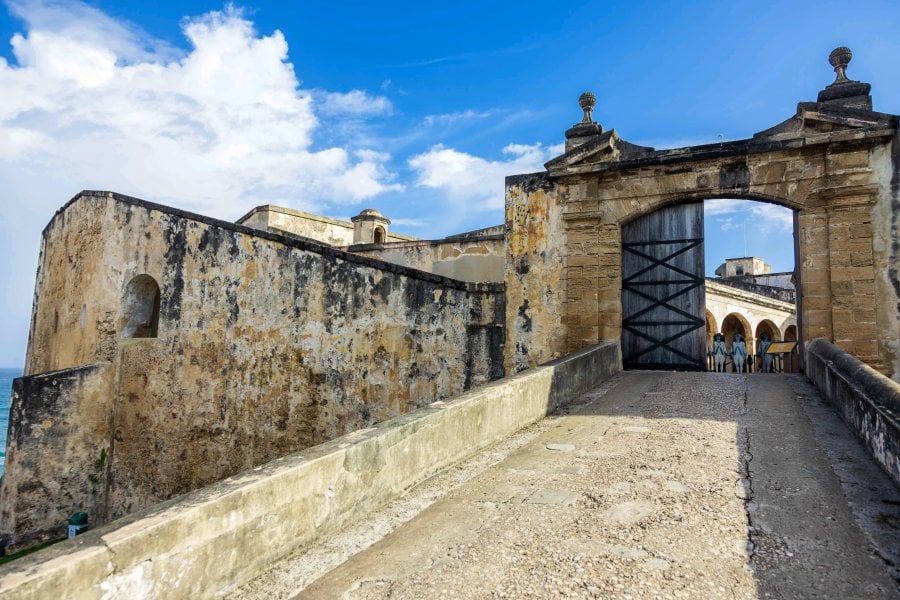
Castillo San Cristóbal is a must-visit spot in Old San Juan.
Other Sites to Visit:
Castillo San Cristóbal
Located on the opposite side of the city, this fortification protected Old San Juan from land-based attacks and is also a National Park. Paying admission to either El Morro or San Cristóbal will get you free entry to the other.

The courtyard of the Museo de las Américas in the Cuartel de Ballajá.
Cuartel de Ballajá
The enormous square yellow building in front of El Morro is a former Spanish barrack that has transformed into a cultural center. On the first floor, there is a coffee shop, a movie theater, and a restaurant. The second floor is the Museo de las Américas. The inner courtyard is often filled with artisans and performance artists during major festivals in Old San Juan, such as Fiestas de la Calle San Sebastián and La Campechada.
Built in the 19th century, this landmark is known as one of the most striking graveyards around the world.
Santa María Magdalena de Pazzis Cemetery
The historic cemetery of Old San Juan is where many prominent Puerto Ricans are laid to rest, including Pedro Albizu Campos, the nationalist leader; René Marqués, an important Puerto Rican writer and playwright; Tite Curet, the father of Afro-Caribbean salsa music; and José Ferré, the first Puerto Rican actor to win an Academy Award.
A celebration of the successful thwarting of a planned invasion of Old San Juan from the British Armada in 1797.
La Rogativa
Head down the street next to Escuela de Artes Plásticas (the red-domed building in front of El Morro). You'll reach a famous sculpture called La Rogativa, which commemorates how a religious procession by the women of the city in 1797 was key to the Spanish winning a major battle against the British Armada. Legend has it that the British soldier saw lines of torches marching through the city and, believing they were reinforcements, halted their attack.
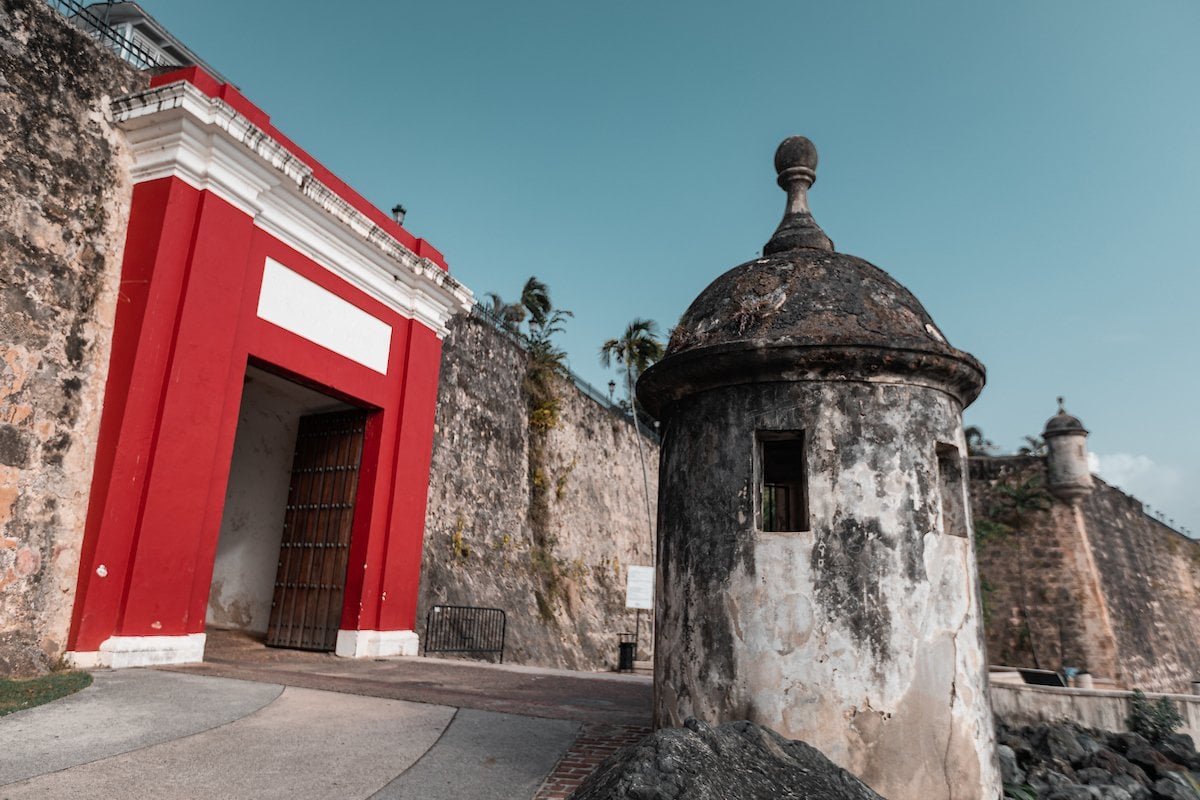
View of the Puerta de San Juan, the original entrance to the walled city when it was built in the 16th century.
The Gate of San Juan
When it was entirely walled in, the main entrance of Old San Juan was a giant doorway carved right into the city wall. From there, you can head directly to Paseo del Morro or left to Paseo de La Princesa.
Comment Guidelines
We value your thoughts and want to foster a respectful and engaged community. As such, we ask that you adhere to the following guidelines when posting comments
- Please ensure your opinions are expressed respectfully.
- We won’t remove comments that engage in courteous debate but hate speech or any form of profanity will not be tolerated. This also applies to the inappropriate use of emojis or hashtags.
- Do not downvote or dislike a comment simply because you disagree with another person’s views.
- Self-promotion and external links are not allowed and will be removed.
- Avoid sharing private information about yourself or others. Doxing (the act of leaking personal information with harmful intent) is strictly prohibited and will result in a ban.
- Comments that are off-topic will be deleted.

